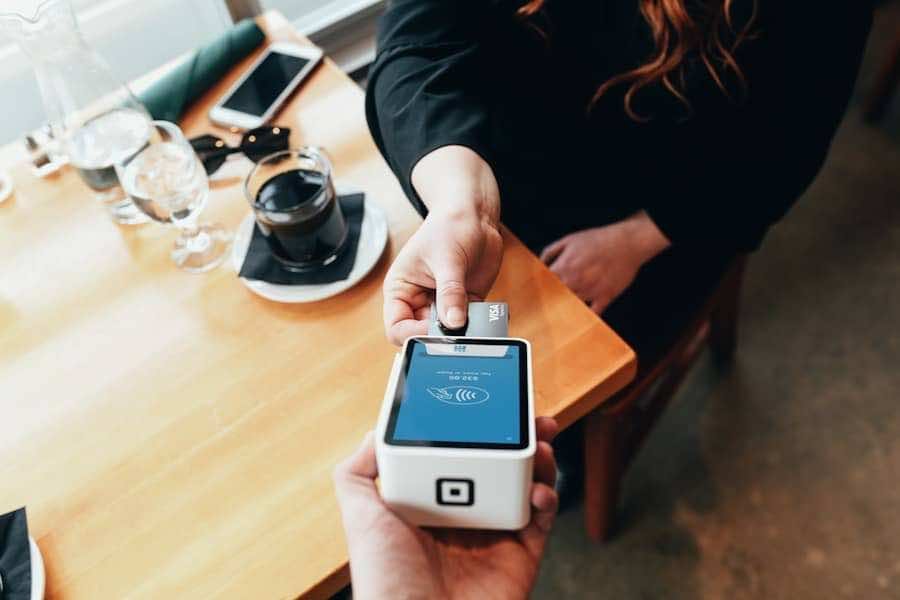Customer loyalty is a multifaceted concept that extends beyond mere repeat purchases. It embodies a customer’s emotional connection to a brand, which can significantly influence their buying behaviour and overall relationship with the company. This loyalty is often cultivated through positive experiences, consistent quality, and effective communication.
When customers feel valued and understood, they are more likely to remain loyal, even in the face of competitive offerings. This emotional bond can manifest in various ways, including brand advocacy, where loyal customers actively promote the brand to others, thereby enhancing its reputation and reach. The dynamics of customer loyalty have evolved considerably in recent years, particularly with the advent of digital technology and social media.
Customers today are more informed and empowered than ever before, with access to a wealth of information at their fingertips. This shift has led to a more discerning consumer base that expects not only high-quality products but also exceptional service and engagement. Brands that fail to meet these expectations risk losing their loyal customers to competitors who can offer a more compelling value proposition.
Thus, understanding the nuances of customer loyalty is crucial for businesses aiming to foster long-term relationships with their clientele.
Summary
- Customer loyalty is the likelihood of customers continuing to do business with a company and recommending it to others.
- Customer loyalty analytics is important for understanding customer behaviour, preferences, and identifying opportunities for improvement.
- Customer loyalty analytics works by collecting and analysing data from various touchpoints to gain insights into customer satisfaction and loyalty.
- Key metrics for customer loyalty analytics include customer retention rate, Net Promoter Score (NPS), and customer lifetime value (CLV).
- Benefits of customer loyalty analytics include improved customer retention, increased customer satisfaction, and higher profitability for the business.
Importance of Customer Loyalty Analytics
In an era where data drives decision-making, customer loyalty analytics has emerged as a vital tool for businesses seeking to understand and enhance their customer relationships. By leveraging data analytics, companies can gain insights into customer behaviour, preferences, and trends that inform their strategies. This analytical approach allows businesses to identify which factors contribute to customer loyalty and which areas require improvement.
For instance, by analysing purchase patterns, companies can determine which products or services are most popular among loyal customers and tailor their offerings accordingly. Moreover, customer loyalty analytics enables businesses to segment their customer base effectively. By categorising customers based on their loyalty levels, companies can develop targeted marketing campaigns that resonate with specific groups.
This segmentation not only enhances the effectiveness of marketing efforts but also fosters a sense of personalisation that customers increasingly expect. In a competitive marketplace, the ability to understand and respond to customer needs through data-driven insights can be the differentiating factor that sets a brand apart from its competitors.
How Customer Loyalty Analytics Works

Customer loyalty analytics operates through the collection and analysis of various data points related to customer interactions with a brand. This data can be sourced from multiple channels, including point-of-sale systems, online transactions, social media interactions, and customer feedback surveys. By aggregating this information, businesses can create comprehensive profiles of their customers that highlight purchasing behaviours, preferences, and engagement levels.
Once the data is collected, advanced analytical techniques such as predictive modelling and machine learning algorithms come into play. These methods allow businesses to identify patterns and correlations within the data that may not be immediately apparent. For example, a company might discover that customers who engage with their brand on social media are more likely to make repeat purchases.
Such insights enable businesses to refine their marketing strategies and enhance customer engagement initiatives, ultimately driving loyalty.
Key Metrics for Customer Loyalty Analytics
To effectively measure customer loyalty, businesses must focus on several key metrics that provide insights into customer behaviour and satisfaction. One of the most widely used metrics is the Net Promoter Score (NPS), which gauges customer willingness to recommend a brand to others. A high NPS indicates strong customer loyalty and satisfaction, while a low score may signal underlying issues that need addressing.
Another important metric is Customer Lifetime Value (CLV), which estimates the total revenue a business can expect from a single customer throughout their relationship with the brand. By understanding CLV, companies can allocate resources more effectively towards retaining high-value customers and developing strategies to increase their lifetime value. Additionally, metrics such as repeat purchase rate and churn rate provide further insights into customer loyalty dynamics.
The repeat purchase rate indicates how often customers return for additional purchases, while the churn rate measures the percentage of customers who stop engaging with the brand over a specific period.
Benefits of Customer Loyalty Analytics
The advantages of implementing customer loyalty analytics are manifold and can significantly impact a business’s bottom line. Firstly, by understanding customer preferences and behaviours through data analysis, companies can tailor their offerings to meet specific needs. This level of personalisation not only enhances customer satisfaction but also increases the likelihood of repeat purchases.
Furthermore, customer loyalty analytics can lead to improved marketing efficiency. By identifying which segments of the customer base are most likely to respond positively to certain campaigns or promotions, businesses can optimise their marketing spend and focus on high-impact strategies. This targeted approach reduces wastage and maximises return on investment.
Additionally, fostering customer loyalty through analytics can lead to increased brand advocacy. Loyal customers are more likely to share their positive experiences with others, both online and offline. This word-of-mouth marketing is invaluable as it builds trust and credibility for the brand in an increasingly sceptical consumer landscape.
Implementing Customer Loyalty Analytics

The successful implementation of customer loyalty analytics requires a strategic approach that encompasses several key steps. Initially, businesses must establish clear objectives for what they hope to achieve through analytics. This could range from improving customer retention rates to enhancing product offerings based on customer feedback.
Once objectives are defined, organisations need to invest in the right technology and tools for data collection and analysis. This may involve adopting Customer Relationship Management (CRM) systems that integrate various data sources or utilising advanced analytics platforms capable of processing large datasets efficiently. Training staff on how to interpret data insights is equally crucial; employees must be equipped with the skills necessary to translate analytical findings into actionable strategies.
Moreover, fostering a culture of data-driven decision-making within the organisation is essential for long-term success. This involves encouraging collaboration between departments such as marketing, sales, and customer service to ensure that insights derived from analytics are shared and utilised effectively across the business.
Challenges of Customer Loyalty Analytics
Despite its numerous benefits, customer loyalty analytics is not without its challenges. One significant hurdle is data privacy concerns; as regulations such as GDPR impose strict guidelines on how businesses collect and use customer data, organisations must navigate these complexities carefully. Ensuring compliance while still gathering meaningful insights can be a delicate balancing act.
Another challenge lies in data integration. Many businesses operate across multiple platforms and channels, leading to fragmented data silos that hinder comprehensive analysis. To overcome this issue, organisations must invest in robust data management systems that facilitate seamless integration across various touchpoints.
Additionally, interpreting data accurately can be daunting for some organisations. Without the right expertise or analytical tools, businesses may struggle to derive meaningful insights from their data. This underscores the importance of investing in skilled personnel or partnering with external analytics firms that can provide the necessary expertise.
Future Trends in Customer Loyalty Analytics
As technology continues to evolve, so too will the landscape of customer loyalty analytics. One emerging trend is the increasing use of artificial intelligence (AI) and machine learning in analysing customer behaviour. These technologies enable businesses to process vast amounts of data quickly and identify patterns that would be difficult for humans to discern alone.
As AI becomes more sophisticated, it will allow for even deeper insights into customer preferences and behaviours. Another trend is the growing emphasis on real-time analytics. In an age where consumers expect instant gratification, businesses must be able to respond swiftly to changing customer needs and preferences.
Real-time analytics will empower organisations to make immediate adjustments to their strategies based on current data trends. Furthermore, there is likely to be an increased focus on emotional loyalty metrics alongside traditional behavioural metrics. Understanding the emotional drivers behind customer loyalty will become increasingly important as brands seek to forge deeper connections with their audiences.
By measuring factors such as brand sentiment and emotional engagement, companies can develop more effective strategies for nurturing long-term loyalty. In conclusion, as businesses navigate an increasingly complex marketplace, harnessing the power of customer loyalty analytics will be essential for fostering enduring relationships with customers and driving sustainable growth.
Customer loyalty analytics is crucial for businesses looking to retain their customer base and increase profitability. By analysing customer behaviour and preferences, companies can tailor their marketing strategies to better meet the needs of their most loyal customers. This data-driven approach can lead to increased customer satisfaction and long-term brand loyalty. For more insights on how hobbies can improve finances, check out this article on Business Case Studies.
FAQs
What is customer loyalty analytics?
Customer loyalty analytics is the process of using data and insights to understand and measure customer loyalty towards a brand or company. It involves analysing customer behaviour, preferences, and interactions to identify patterns and trends that can help improve customer retention and satisfaction.
Why is customer loyalty analytics important?
Customer loyalty analytics is important because it helps businesses understand their customers better, identify areas for improvement, and make data-driven decisions to increase customer retention and loyalty. It also allows businesses to personalise their marketing efforts and improve customer experience.
What are the benefits of using customer loyalty analytics?
Some of the benefits of using customer loyalty analytics include:
– Identifying loyal customers and understanding their preferences
– Improving customer retention and reducing churn
– Personalising marketing and communication strategies
– Increasing customer satisfaction and loyalty
– Identifying opportunities for cross-selling and upselling
What types of data are used in customer loyalty analytics?
Customer loyalty analytics uses various types of data, including:
– Customer purchase history
– Customer feedback and reviews
– Customer demographics and psychographics
– Customer interactions with the brand (e.g. website visits, social media engagement)
– Customer loyalty program participation and redemption data
How can businesses use customer loyalty analytics to improve customer loyalty?
Businesses can use customer loyalty analytics to improve customer loyalty by:
– Identifying and rewarding loyal customers
– Personalising marketing and communication efforts
– Improving customer service and support
– Identifying and addressing customer pain points
– Developing targeted loyalty programs and incentives
